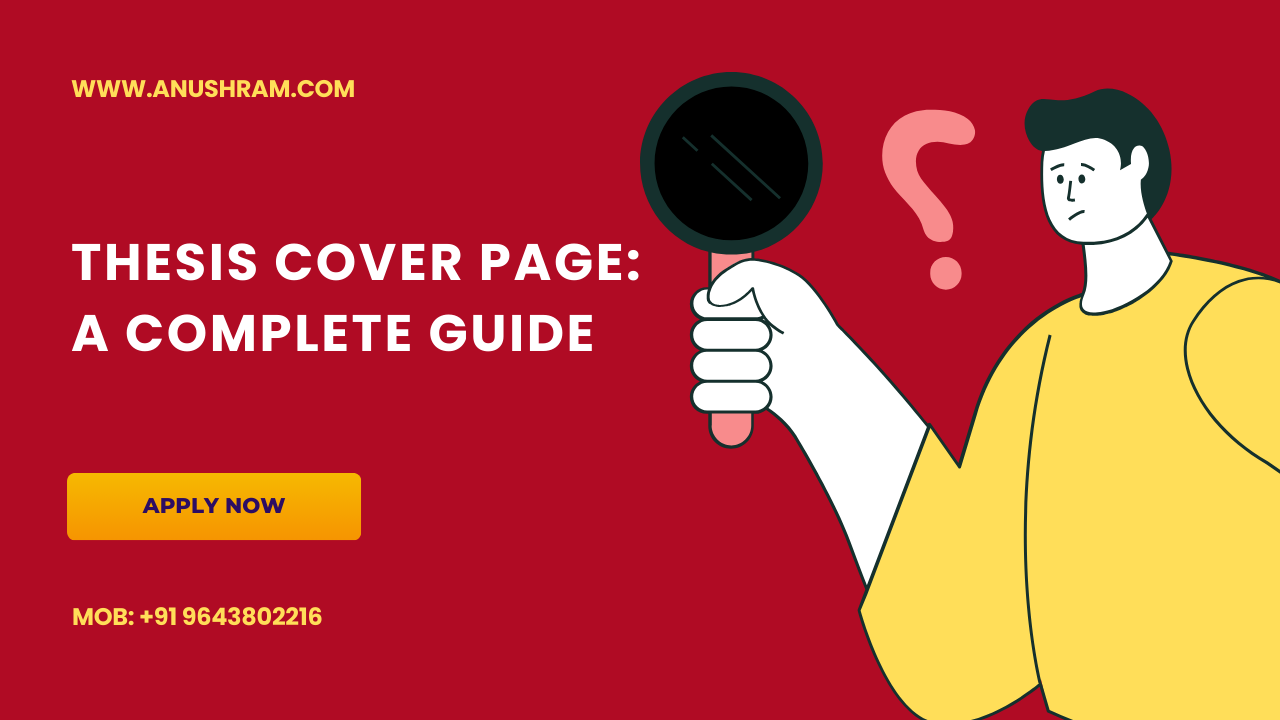Thesis Antithesis: A Complete Guide
The concepts of thesis and antithesis have been an essential part of philosophy, literature, critical thinking, and academic research for centuries. They represent two opposing viewpoints or ideas that challenge one another to develop higher levels of understanding. This dynamic interaction between thesis and antithesis often leads to synthesis – a refined perspective that combines the strengths of both sides.
In academic and intellectual traditions, understanding thesis antithesis helps students, researchers, and writers explore different viewpoints, build logical arguments, and enhance their critical thinking skills. At Anushram, we believe that grasping these concepts is essential for scholars and researchers to produce meaningful and impactful academic work.
This detailed guide will explore the meaning, origin, importance, and application of thesis antithesis, providing examples and insights for students, writers, and thinkers.
What is Thesis?
A thesis is a statement, idea, or proposition that represents one side of an argument. In philosophy and academic writing, a thesis acts as the central claim or position that needs to be proven or defended with evidence and reasoning.
For example:
- Thesis: Technology improves human productivity.
This statement forms a clear position that can be supported with facts, research, and examples.
In academics, particularly in thesis writing, the word “thesis” also refers to a comprehensive research document submitted by a student to demonstrate mastery of a subject. At Anushram, we often guide students on how to structure, write, and refine their thesis so that it presents a well-founded argument.

What is Antithesis?
The antithesis is the direct opposite of a thesis. It challenges the initial proposition with a counter-argument, presenting an alternative viewpoint. The purpose of antithesis is not merely to reject the thesis but to test its strength by confronting it with valid counterclaims.
For example:
- Antithesis: Technology decreases human productivity by making people over-dependent on machines.
By placing thesis and antithesis side by side, one can critically examine the merits and drawbacks of both arguments. This clash often results in deeper insights.
The Relationship Between Thesis and Antithesis
The thesis-antithesis relationship is dialectical in nature, meaning it thrives on dialogue, conflict, and resolution. The process does not stop with just thesis and antithesis. A higher stage, known as synthesis, often emerges as a refined understanding.
For example:
- Thesis: Online education is effective for learning.
- Antithesis: Online education lacks personal interaction and therefore is ineffective.
- Synthesis: Online education is effective when combined with interactive tools and hybrid learning methods.
This process shows how the clash between thesis and antithesis can generate balanced solutions.
Origin of the Thesis-Antithesis Concept
The idea of thesis antithesis originates from philosophy. Although it is widely attributed to the German philosopher Georg Wilhelm Friedrich Hegel, the structured form of thesis, antithesis, and synthesis was more explicitly developed by Johann Gottlieb Fichte.
- Hegel’s dialectic: Hegel’s philosophy often dealt with contradictions and resolutions, but he did not directly use the triad of thesis-antithesis-synthesis in his works.
- Fichte’s contribution: Fichte applied the model of thesis-antithesis-synthesis in his philosophical writings to explain how knowledge and ideas evolve.
Over time, this concept has influenced not only philosophy but also literature, politics, psychology, and academic writing. At Anushram, we encourage students to explore these philosophical foundations while applying thesis-antithesis models in their research.
Importance of Thesis Antithesis in Critical Thinking
Understanding and applying thesis antithesis offers several benefits in critical thinking:
- Encourages open-mindedness – By exploring opposing viewpoints, students learn to respect diverse perspectives.
- Strengthens arguments – A thesis becomes stronger when it can withstand the pressure of counter-arguments.
- Promotes problem-solving – The clash of thesis and antithesis often leads to synthesis, which provides balanced and innovative solutions.
- Enhances academic writing – Including both thesis and antithesis makes research papers and essays more comprehensive and credible.
At Anushram, we emphasize critical thinking as a foundation for quality thesis writing services.
Applications of Thesis Antithesis
The thesis-antithesis approach is not limited to philosophy. It is applied in multiple fields:
1. Philosophy
Philosophers use thesis and antithesis to debate abstract ideas like truth, freedom, justice, and morality.
2. Literature
Authors often use antithesis as a literary device to create contrast. For example, Charles Dickens wrote in A Tale of Two Cities: “It was the best of times, it was the worst of times.”
3. Politics
Debates in politics often follow the thesis-antithesis model. One party presents a policy (thesis), the opposition challenges it (antithesis), and compromises (synthesis) emerge.
4. Science and Research
Scientific progress thrives on thesis and antithesis. A hypothesis (thesis) is tested against experiments (antithesis), leading to new theories (synthesis).
5. Education
In classrooms, teachers encourage students to examine both thesis and antithesis to improve their reasoning skills.
At Anushram, we help students apply thesis-antithesis frameworks in their assignments, essays, and dissertations.
Examples of Thesis and Antithesis
To understand this better, let’s explore a few examples:
- Philosophy
- Thesis: Human beings are inherently good.
- Antithesis: Human beings are inherently selfish.
- Technology
- Thesis: Artificial Intelligence creates jobs by opening new industries.
- Antithesis: Artificial Intelligence destroys jobs by automating tasks.
- Environment
- Thesis: Industrialization leads to economic growth.
- Antithesis: Industrialization causes environmental destruction.
- Education
- Thesis: Traditional classrooms are effective for learning.
- Antithesis: E-learning is more effective than traditional methods.
- Society
- Thesis: Social media connects people worldwide.
- Antithesis: Social media isolates people from real-world interactions.
Each example demonstrates how thesis and antithesis create a dialectical process of analysis.
How to Use Thesis and Antithesis in Academic Writing
When writing essays, research papers, or dissertations, applying thesis antithesis enhances the depth of arguments. Here are steps to use them effectively:
- State your thesis clearly – Define your main claim or research question.
- Introduce the antithesis – Present opposing arguments with supporting evidence.
- Analyze both sides – Critically evaluate the strengths and weaknesses.
- Move towards synthesis – Provide a balanced conclusion that integrates both perspectives.
At Anushram, we guide researchers to structure their academic work using this model, ensuring clarity, balance, and strong reasoning.
Common Mistakes in Using Thesis and Antithesis
- Over-simplification – Presenting weak antithesis arguments makes the thesis look artificially strong.
- Bias – Ignoring the value of opposing viewpoints reduces the credibility of research.
- Lack of synthesis – Stopping at thesis and antithesis without resolution leaves arguments incomplete.
We at Anushram recommend that students address these mistakes by practicing objective analysis and striving for synthesis.
Thesis Antithesis and Debate Skills
Debate is one of the best real-life examples of thesis-antithesis in action. One team presents a thesis, while the other presents an antithesis. The judges and audience evaluate both sides and often reach a synthesis in their judgment.
For students, mastering thesis and antithesis improves debating skills by:
- Enhancing logical reasoning
- Strengthening rebuttal techniques
- Building confidence in public speaking
Thesis Antithesis in Modern Context
In today’s world, thesis and antithesis can be observed everywhere:
- In media, where different news channels present opposing views.
- In technology, where supporters and critics debate the impact of innovations.
- In social issues, where diverse perspectives clash and evolve.
By applying this model, society can move toward balanced and sustainable solutions. At Anushram, we believe that encouraging dialectical thinking helps individuals make informed decisions.
Conclusion
The concept of thesis antithesis is timeless and universal. From philosophy to modern research, it provides a structured way to understand contradictions and arrive at higher truths. Whether in academic writing, debates, literature, or social discussions, thesis and antithesis fuel intellectual growth.
At Anushram, we guide students and researchers to apply this approach effectively in their academic journeys. By mastering the art of thesis and antithesis, learners can strengthen their critical thinking, improve their writing, and contribute meaningfully to knowledge creation.
Contact Us Today!
📧 Email: info@anushram.com
📞 Phone/WhatsApp: +91 9643802216
🌐 Website: www.anushram.com
Follow us on social media for discounts, updates, and academic tips!
- Thesis Writing Service In Delhi
- Best Phd Thesis Writing Service In India
- Thesis of DR BR Ambedkar
- Shodhganga Research Topics in Education
- Best Architecture Thesis Topics
- Best Architecture Thesis Topics
- Krishi Kosh Thesis Download
- Thesis Binding – Complete Guide by Anushram
- RGUHS Thesis – A Complete Guide by Anushram
- Acknowledgement for Thesis
Contact Us If You
Have Any Question
You can book our free consultation for your queries or get some ideas to start your business best!
Related Post
Contact Details
- +91 9643802216
- info@anushram.com
- M-13, Ground Floor, OLD-DLF Colony, Sec-14, Gurugram, Haryana-122001, INDIA




